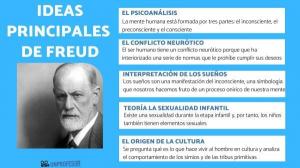12 characteristics of the SCULPTURE of Romanticism [with IMAGES!]

The Romanticism was an artistic, cultural and literary movement that emerged late 18th century France, England and Germany, to spread to the rest of Europe and America. A movement that flees from reason in search of emotion, the oneiric and the imagination and draws inspiration from nature and idealized past ages such as the Middle Ages. A movement that felt admiration for the phenomena of nature, the esoteric, magic and legends.
In this lesson from unPROFESOR.com we offer you a review of what are the characteristics of the sculpture of Romanticism.
Before talking about the characteristics of the sculpture of Romanticism, we are going to know what these works of art were like. And it is that the sculptural creation also followed the guidelines of romanticism, but without reaching development as huge as the romantic painting. Thus, it lasted for a short period of time, with most of the sculptural creations commissioned to beautify official buildings or sculpt commemorative monuments.
This scarce sculptural production compared to the sculptural one makes it be considered a
transition period inside the sculpture. A period in which they remained classicist elements, coming soon features realistic. Thus, specialists point out that it is not easy to apply the terms romanticism or realism to the production sculpture from the 19th century, and can be considered romantic works more because of the theme than because of the techniques.Paris was the artistic capital of romantic movement, although in sculpture it did not reach the same development in number of works or in that of outstanding figures.

We are now going to look at the most outstanding characteristics of Romanticism sculpture so that you can better understand how this discipline developed. The elements are the following:
- Romanticism had its greatest heyday between 1825 and 1875, although Romantic sculpture took off after 1830.
- A movement characterized by reinterpretation of classical and gothic, rather than being a new and different style.
- The topics of the sculpture of Romanticism are narratives and complex and dynamic compositions are created, following the same trend as painting in expressing intense and agitated feelings and actions, thus opposing neoclassical serenity. Thus, human emotions and individualism were one of the constants in romantic sculpture, expressing themselves unusual emotions in works of art: fear, surprise, etc.
- Another characteristic of the sculpture of Romanticism is that it tends to look for contrasts in the lines, in the creation of areas of light and shadow and the expressiveness of faces and gestures.
- The most used material was bronze for being much more moldable than marble. Other materials commonly used in Romantic sculpture were cast iron and gilded zinc.
- They were inspired by Middle Ages to search for topics.
- Nature is combined with natural elements to represent concrete ideas. Although there were romantic sculptors who only represented animals, being strongly influenced by their natural environment. For the romantics, nature was the primitive state of the human being.
- They didn't used to use models, since they were considered to be a negative influence on the sculptor's creativity. Thus, the sculptors resorted only to their original ideas, in an exaltation of freedom against academicism.
- the romantic sculpture was developed later to painting, attributing lateness to the fact that sculpting in marble the expressions and gestures that were sought took longer.
- Romantic sculpture was shaped especially in bas-reliefs, medallions, plaster works and terracotta, in addition to preferring unfinished and imperfect works.
- The topics The most common were melancholy, heroism, nonconformity, disappointment, love, death and freedom, among others.
- Between the sculptors The most recognized French Romanticists stand out: François Rude, Antoine Louis Barye, Jean Baptiste Carpeaux, Antoine Augustin Preault, among others. The main figure of nineteenth-century French sculpture was Auguste Rodin, standing out for his ability to show emotions and feelings through gestures and movements. He was inspired by Gothic art and figures such as Michelangelo and Donatello, as well as Rococo.
And with this we finish our review of the most outstanding characteristics of the sculpture of Romanticism. We hope that it has been of help to you and that, now, you know better this artistic discipline.




